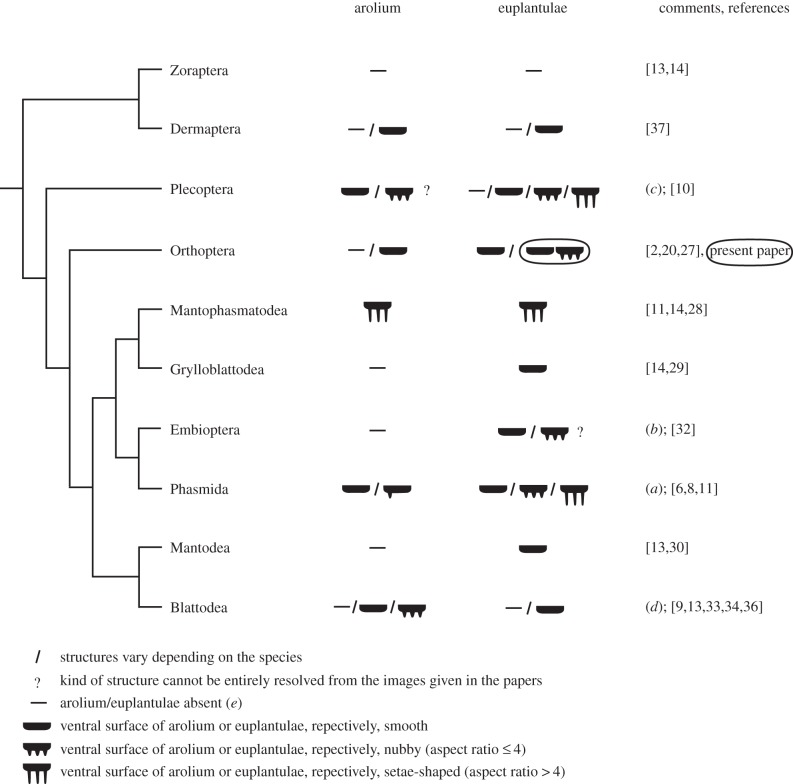Figure 2.
Structures on the attachment organs (arolia and euplantulae) in Polyneopteran orders. The cladogram follows Misof et al. [31]. Findings of the present paper are circled. (a) In Timema nevadense (Timematidae, the most basal family within the Phasmida), the central area of the arolium is smooth and euplantulae have setae-shaped structures [11]; representatives of the Euphasmatodea (all other phasmid families) have an entirely smooth arolium and smooth or nubby euplantulae [6,8,11]. (b) Small semicircular protuberances (papillae) are present on meso- and metathoracic tarsomeres in Embioptera [32]; they cover only a small proportion of the tarsomeres. These papillae look similar to euplantulae, however, their origin is not yet solved. (c) In the exhaustive study of Nelson [10], 39 plecopteran species were analysed and a large variety of structures and their combinations were described for the ventral tarsomeres. The nubs on the arolia seem to vary in length, so that some of them might have an aspect ratio > 4. (d) Cockroaches: arolia and euplantulae absent, smooth or nubby [9,33,34], reduction of the arolium often occurs in cavernicolous species [33]; termites (Epifamily Termitoidae within Blattodea [35]): arolia are present in alate adults of some species and absent in workers [36], euplantulae are absent [13]. (e) If specialized attachment organs are lacking, the ventral side of the tarsomeres is usually covered with long setae-like structures.

